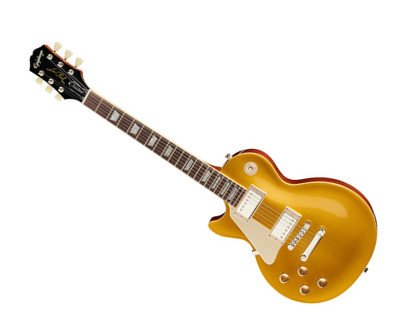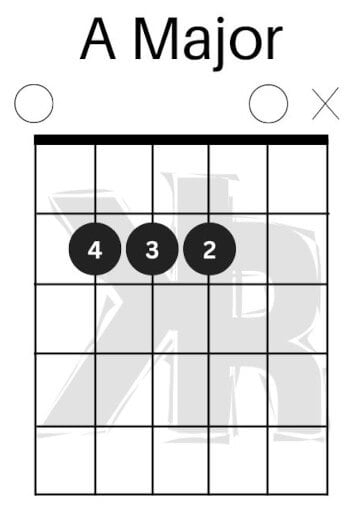Table of Contents
Navigating the guitar world as a lefty can feel like wandering through a mirror image. Everything is familiar, yet subtly different, compelling us to rethink our perspectives on guitar playing. Being a left-handed guitarist is unique, challenging, and rewarding.
It’s not just about playing the instrument with a different hand. It’s about understanding a distinct set of skills, adapting to the guitar landscape, and finding inspiration in the success of famous left-handed players.
This Killer Rig article will help you tackle the challenges and make the most of being a left-handed player. We’ll discuss the different kinds of guitars that are out there, how to hold and play them, and where to locate useful information.
The Left-Handed Guitar: A Necessity or a Choice?
If you’re left-handed, you might initially wonder if you require a specialized guitar or if a standard right-handed model will suffice. Each choice has its advantages and disadvantages, and your final decision is often a matter of personal comfort and preference.
Left-Handed Guitars
- Pros: Designed for left-handers, these guitars have the thick E string on the right side, making it easier to hold and play. The volume and tone controls are also placed for easy access.
- Cons: They can be more expensive and less readily available.
Right-Handed Guitars
- Pros: Easier to find and usually cheaper. Some left-handed legends like Jimi Hendrix played a flipped-over right-handed guitar.
- Cons: You’ll need to restring the guitar, and the volume and tone controls will be in less convenient locations.
Adapting a Right-Handed Guitar
Some left-handers opt to adapt a right-handed guitar for left-handed playing. This involves restringing the guitar and possibly making some modifications. While this route can be less costly, it may require some DIY skills.
Making the Choice
Your decision may hinge on several factors:
- Availability of left-handed guitars in your area
- Your budget
- Whether you find it comfortable to adapt to a right-handed setup
In the end, the best choice is the one that allows you to play comfortably and enjoy your time making music.

Techniques: The Left-Handed Way
Playing the guitar left-handed comes with its own set of rules and techniques. From holding the guitar to mastering chords, here’s how to get started and improve your skills.
Holding the Guitar
- Neck Grip: Hold the guitar neck with your right hand. Your thumb should rest on the back of the neck, allowing your fingers to move freely on the fretboard.
- Strumming: Use your left hand for strumming or picking the strings. Keep your hand relaxed to allow for smooth movement.
Mastering Chords
- Finger Placement: Use your right hand to press down on the strings against the frets. Make sure your fingers are right behind the frets for a clear sound.
- Chord Transitions: Practice moving from one chord to another smoothly. Start slow and gradually increase speed as you become more comfortable.
Building Speed and Dexterity
- Scales: Practicing scales can help you become more familiar with the fretboard and improve your speed.
- Exercises: Finger exercises can help build strength and dexterity. Simple drills like “hammer-ons” and “pull-offs” can be very effective.
Strumming and Picking
- Strumming Patterns: Experiment with different strumming patterns to add variety to your playing.
- Picking Techniques: Learn techniques like alternate picking and palm muting to add more depth to your sound.
Tips for Improvement
- Metronome Use: Practicing with a metronome can help you keep time and improve your rhythm.
- Regular Practice: Consistency is key. Make a practice schedule and stick to it.
By focusing on these techniques, left-handed players can develop their skills and become proficient guitarists.

Tips and Tricks for Left-Handed Players
Navigating the guitar world as a left-handed player can be a bit tricky, but there are ways to make your journey smoother and more enjoyable. Here are some practical tips to help you out.
Finding the Right Gear
- Try Before You Buy: Always test out a guitar before purchasing. Even if you’re buying online, try to find the same model in a store to get a feel for it.
- Capos and Slides: These accessories are usually universal, but it’s a good idea to test them out to make sure they’re comfortable for left-handed use.
Resourcefulness is Key
- Online Tutorials: There are plenty of online resources tailored for left-handed players. Use them to your advantage.
- Mirror Technique: Watching a tutorial for right-handers? Use the mirror feature on your video player to flip the image and make it easier to follow along.
Adapt and Overcome
- String Flipping: If you’re using a right-handed guitar, learn how to restring it for left-handed play.
- Sticker Labels: Use stickers to label chord positions on your fretboard when you’re starting out. Just remember to remove them as you get more comfortable.
Practice Makes Perfect
- Start Slow: Don’t rush through songs or scales. Take your time to get it right.
- Record Yourself: Use your phone to record practice sessions. Playback can offer insights into areas for improvement.
Community and Support
- Join Forums: Online communities can offer valuable advice and moral support.
- Find a Left-Handed Mentor: If possible, seek out a left-handed guitar teacher or mentor for personalized guidance.
Guitar Chords
Many beginners have a concern with the learning material for left-hand guitars. If the guitar is a mirror image of a right-handed instrument, what does that mean with chords and notes?
If this was a concern of yours, then you will be relieved to know that it changes nothing at all. The chords are also a mirror image. Here are the left-handed chords of A major and minor as examples:


The chords are a better match to the fretboard on a left-handed guitar. There are many chord charts for left-handed players all over the internet. So you will have no issues learning to play this way.
Tablature
Many musicians use guitar tablature as a very helpful tool to read and play tunes. You will also benefit from tabs as a lefty. And as we have already seen! There are numerous similarities between right and left-handed guitar playing.
Tabs are also oriented to be read with the left hand and are fairly similar to one another. There is nothing to be concerned about here either, as you can see in the image below!

This tablature is of an A major chord, like our chart above. As you can see, it’s easy to read and can be played by a left-handed person who has become familiar with it.
This will take time, but will be easy once you get used to it. When looking for tabs, Ultimate Guitar and Songsterr are the best sources.
Best Left-Handed Guitars
Choosing the right guitar is crucial for any player, but especially for left-handers who might find their options somewhat limited.
Below is a chart that outlines some of the best left-handed guitars available in the market, each with its own set of features tailored to different needs and skill levels.
| Guitar Model | Type | Price Range | Special Features | Best For |
|---|---|---|---|---|
| Ibanez AW54LCE | Electro-Acoustic | Affordable | All-mahogany body | Beginners |
| Yamaha Pacifica 112J | Electric | Affordable | Versatile design | Beginners |
| Fender Redondo Player | Electro-Acoustic | High-Quality | Feature-packed | Beginners |
| PRS SE Custom 24 Lefty | Electric | Mid-Range | Available in Vintage Sunburst and Charcoal Burst | Intermediate Players |
| Epiphone Left Handed Les Paul Custom Pro | Electric | Mid-Range | Classic design | Beginners |
| Squier Classic Vibe ’70s | Electric | Affordable | Vintage look and feel | All Levels |
- Ibanez AW54LCE: An all-mahogany electro-acoustic guitar that won’t break the bank, making it a solid choice for those just starting out.
- Yamaha Pacifica 112J: Known for its versatility, this electric guitar is both affordable and widely available, making it a go-to for beginners.
- Fender Redondo Player: This electro-acoustic model is a bit on the pricier side but comes loaded with features that make it worth the investment, especially for beginners.
- PRS SE Custom 24 Lefty: A versatile electric guitar that comes in eye-catching finishes like Vintage Sunburst and Charcoal Burst. Ideal for those who have some experience under their belt.
- Epiphone Left Handed Les Paul Custom Pro: A classic design that’s beginner-friendly. Its mid-range price makes it accessible while still offering quality sound.
- Squier Classic Vibe ’70s: If you’re looking for something that combines affordability with a vintage aesthetic, this electric guitar fits the bill and is suitable for players at all levels.
The Best Left-Handed Guitarists
Throughout the history of music, left-handed guitarists have left their indelible marks, often challenging the norms and pioneering new styles. Let’s take a moment to celebrate these iconic southpaw players.
Tony Iommi
Tony Iommi, the legendary guitarist of Black Sabbath, has left an enduring legacy in the world of heavy metal. His left-handed playing, combined with his innovative use of dropped tunings and power chords, shaped a genre and inspired generations of guitarists.
Kurt Cobain
Kurt Cobain, the frontman of Nirvana, took the grunge scene by storm with his raw and powerful left-handed guitar playing. His unique style and emotive performances have made him an icon for left-handed musicians worldwide.
Jimi Hendrix
Arguably the most famous left-handed guitarist, Jimi Hendrix turned the music world upside down with his revolutionary playing style. His experimental techniques and expressive performances continue to inspire left-handed and right-handed guitarists alike.
Tim Armstrong
As the driving force behind punk rock bands like Rancid and Operation Ivy, Tim Armstrong’s aggressive left-handed guitar playing has left a lasting impact on the punk rock scene. His no-holds-barred approach embodies the rebellious spirit of punk music.
Paul McCartney
Sir Paul McCartney, the iconic Beatle, is renowned for his left-handed bass playing. His melodic bass lines and innovative techniques have significantly influenced the role of the bass guitar in popular music.
Each of these left-handed guitarists has demonstrated that being a lefty in a right-handed world isn’t a limitation! It’s an opportunity to innovate, to challenge norms, and to make music that resonates across generations.
Online Communities and Learning Resources for Left-Handed Players
The internet is brimming with resources for left-handed guitarists. From YouTube tutorials specifically designed for lefties to online communities where left-handed guitarists share experiences, tips, and tricks. You’ve got plenty of learning resources at your fingertips.
Some of the popular online platforms for left-handed guitar lessons include Justin and Guitar Tricks. As for communities, check out LeftyFretz and the “Left-Handed Guitarists” group on Reddit.
Conclusion
As we strum the final chord on this exploration of left-handed guitar playing, there’s one thing that’s clear! Lefties bring a unique perspective to the world of guitar playing. They navigate challenges, overcome barriers, and along the way, create beautiful music that enriches our lives.
Remember, being a lefty guitarist isn’t just about playing with a different hand, it’s about approaching music from a distinct angle. It’s about seeing the guitar world through a different lens and, in doing so, discovering new ways to express your musicality.

